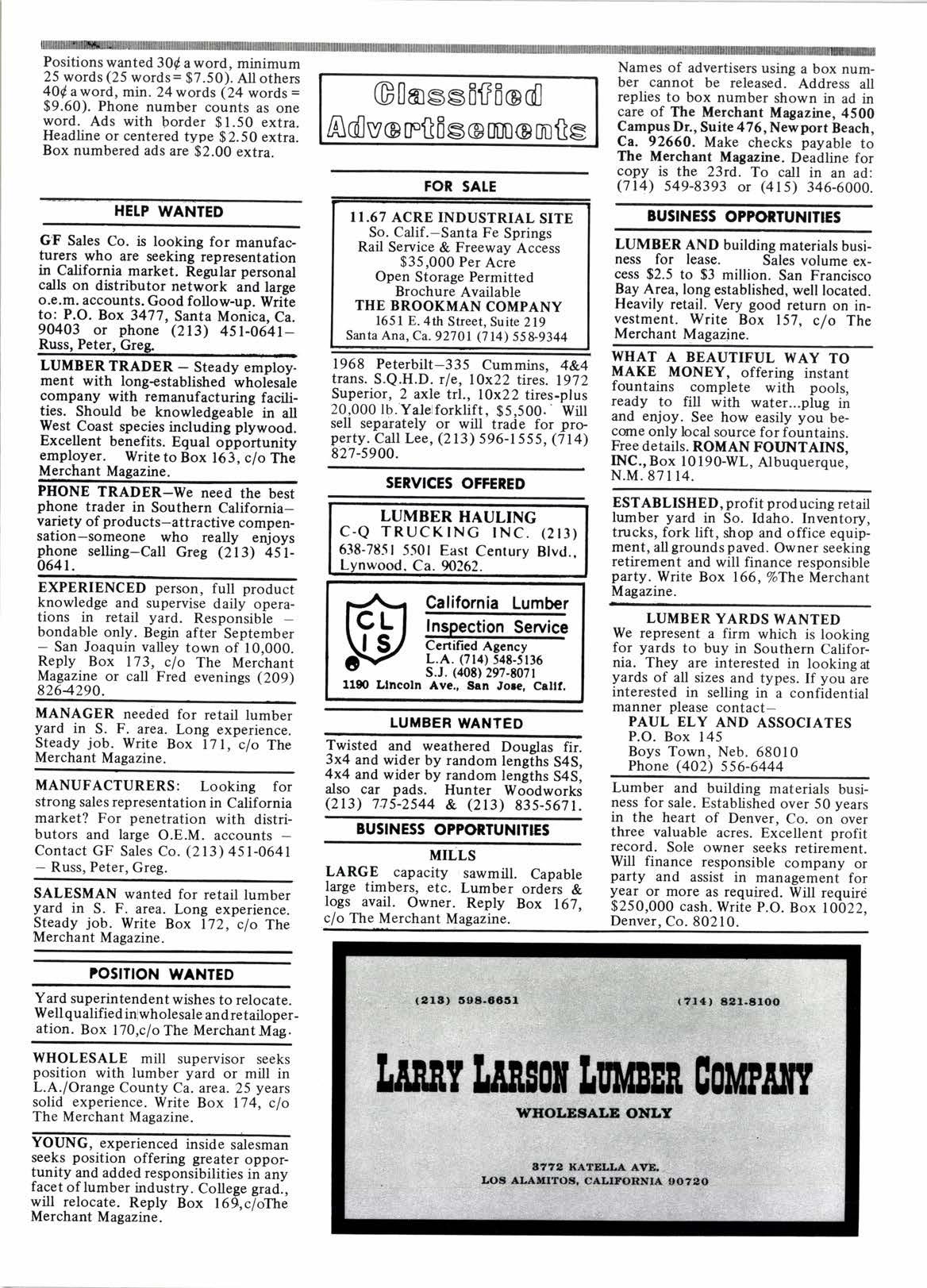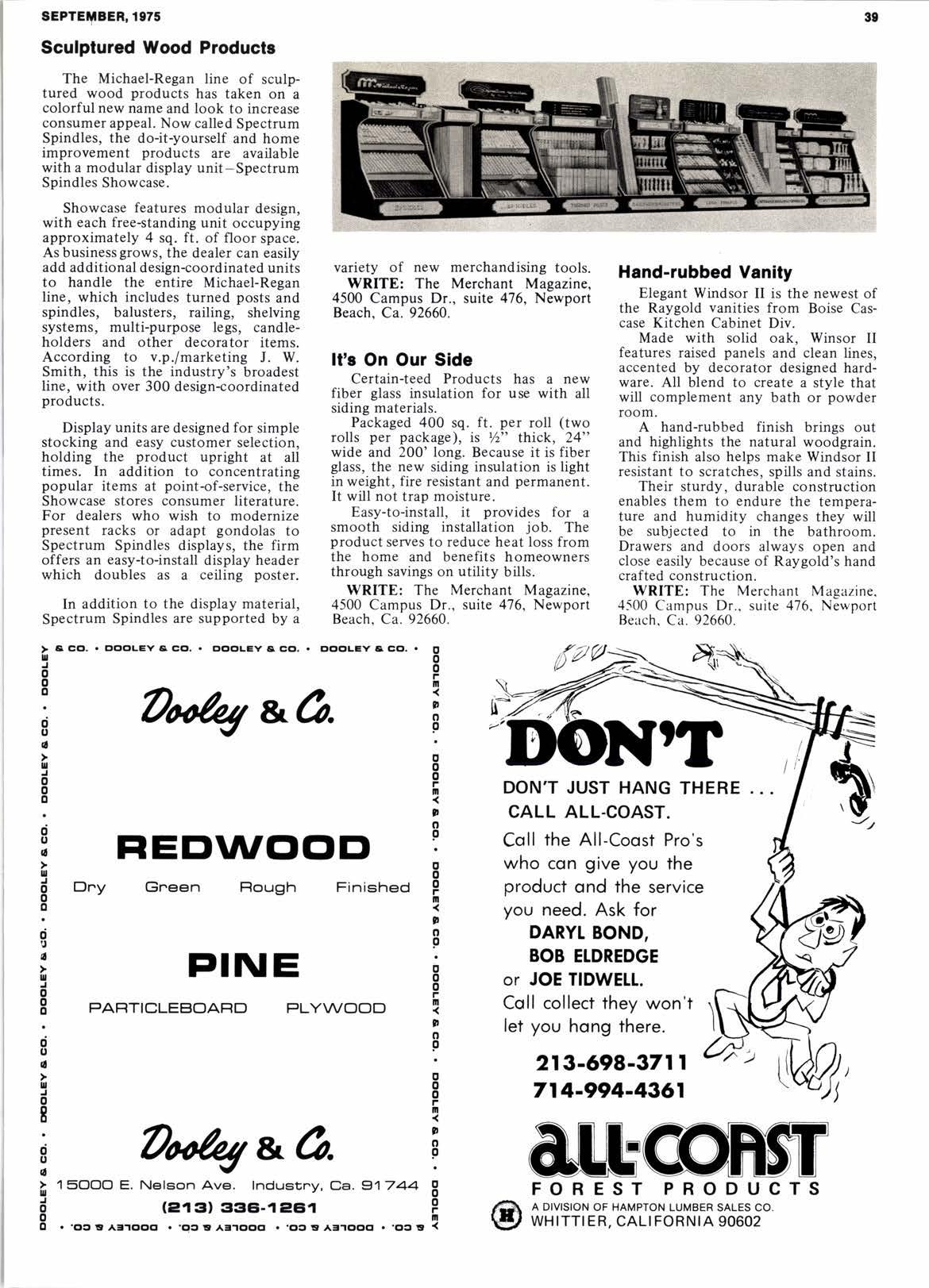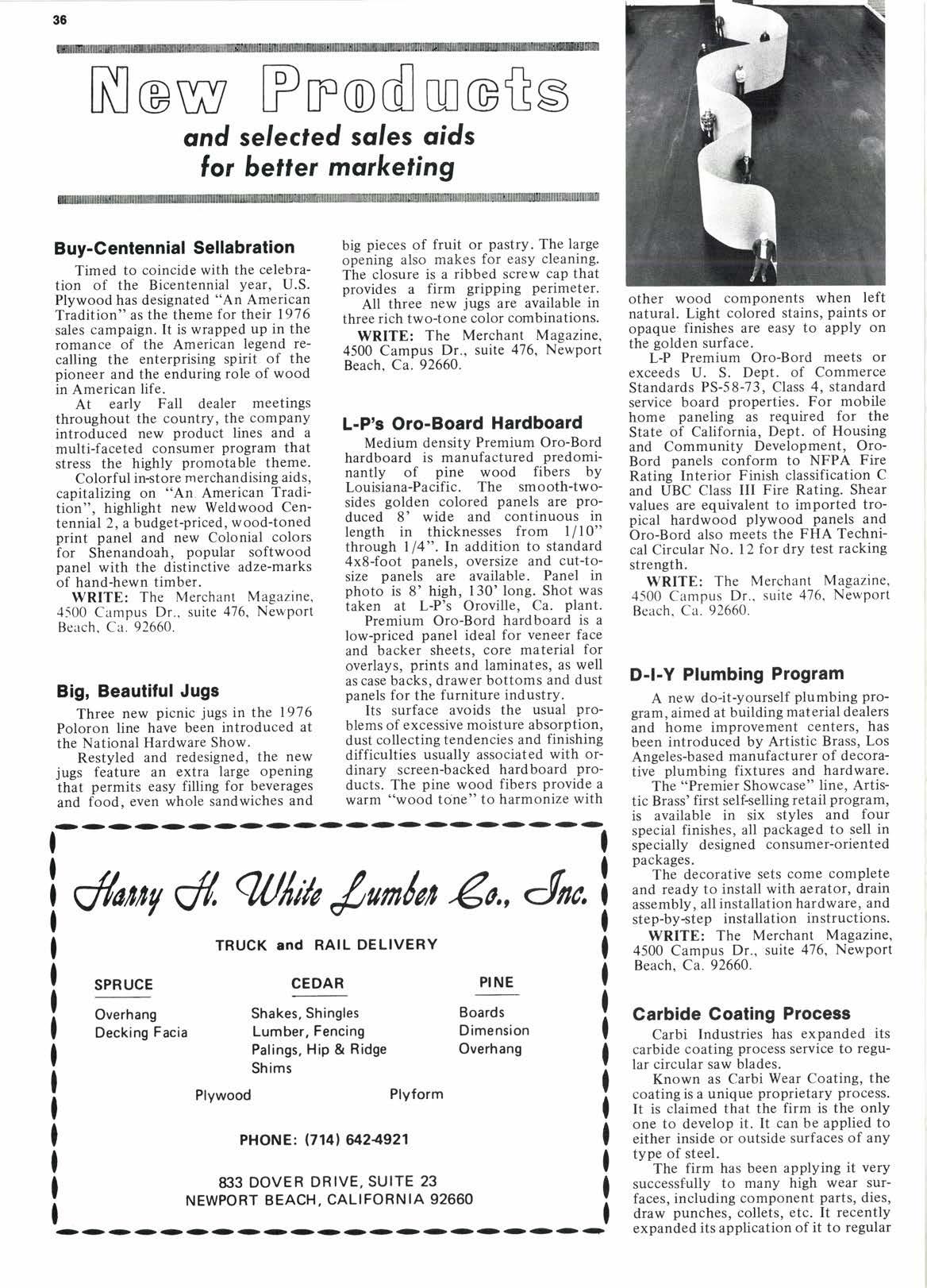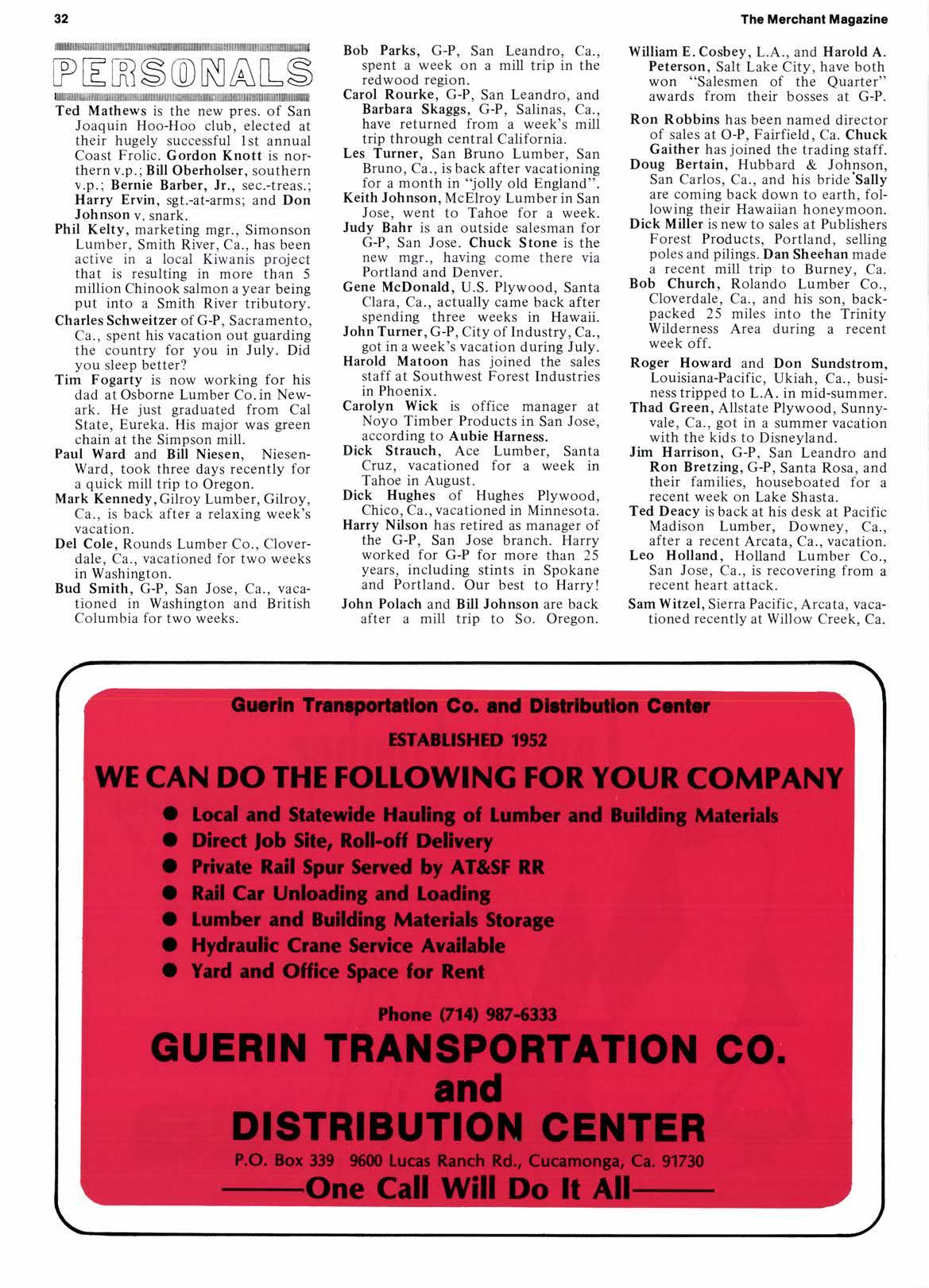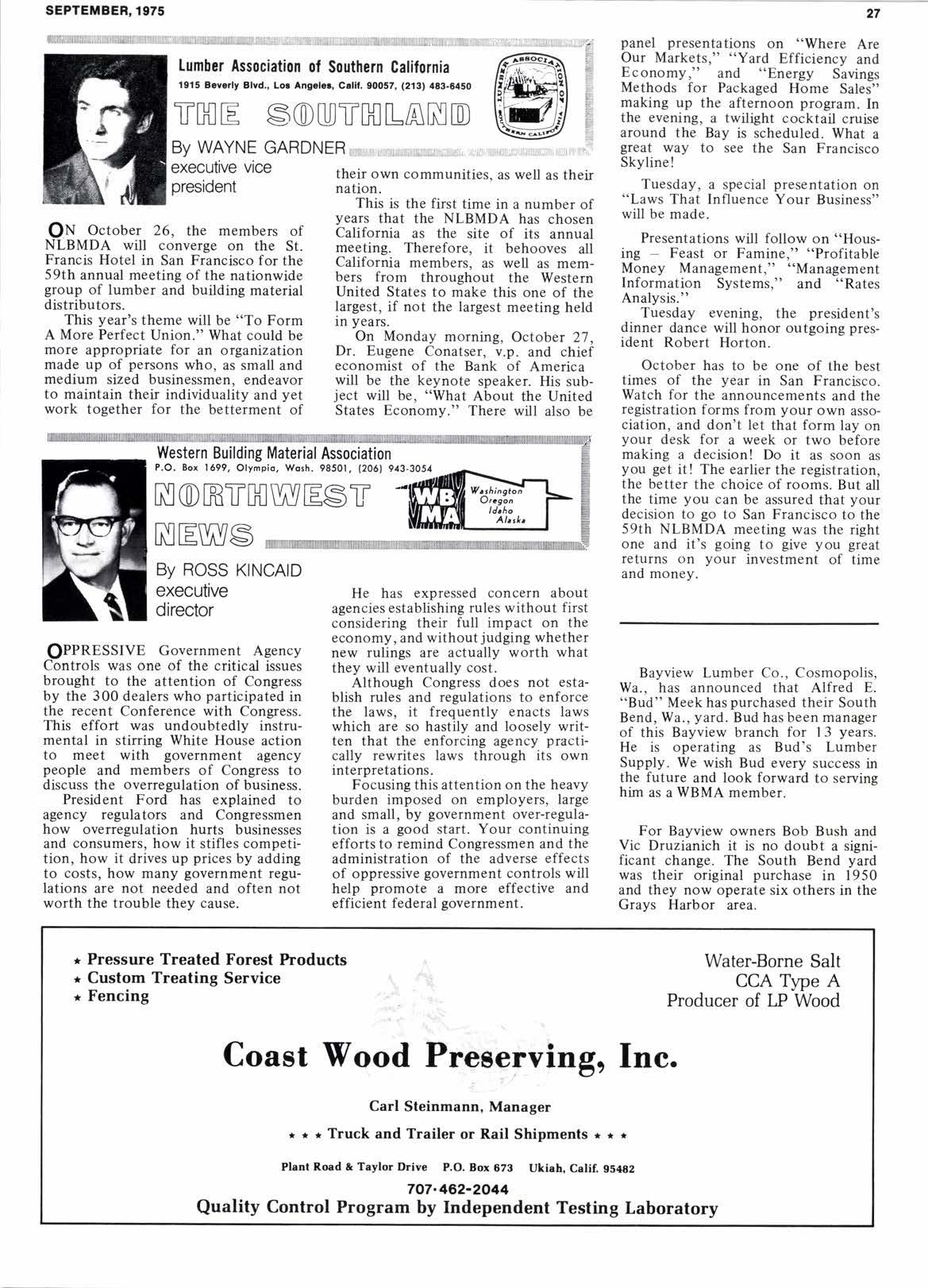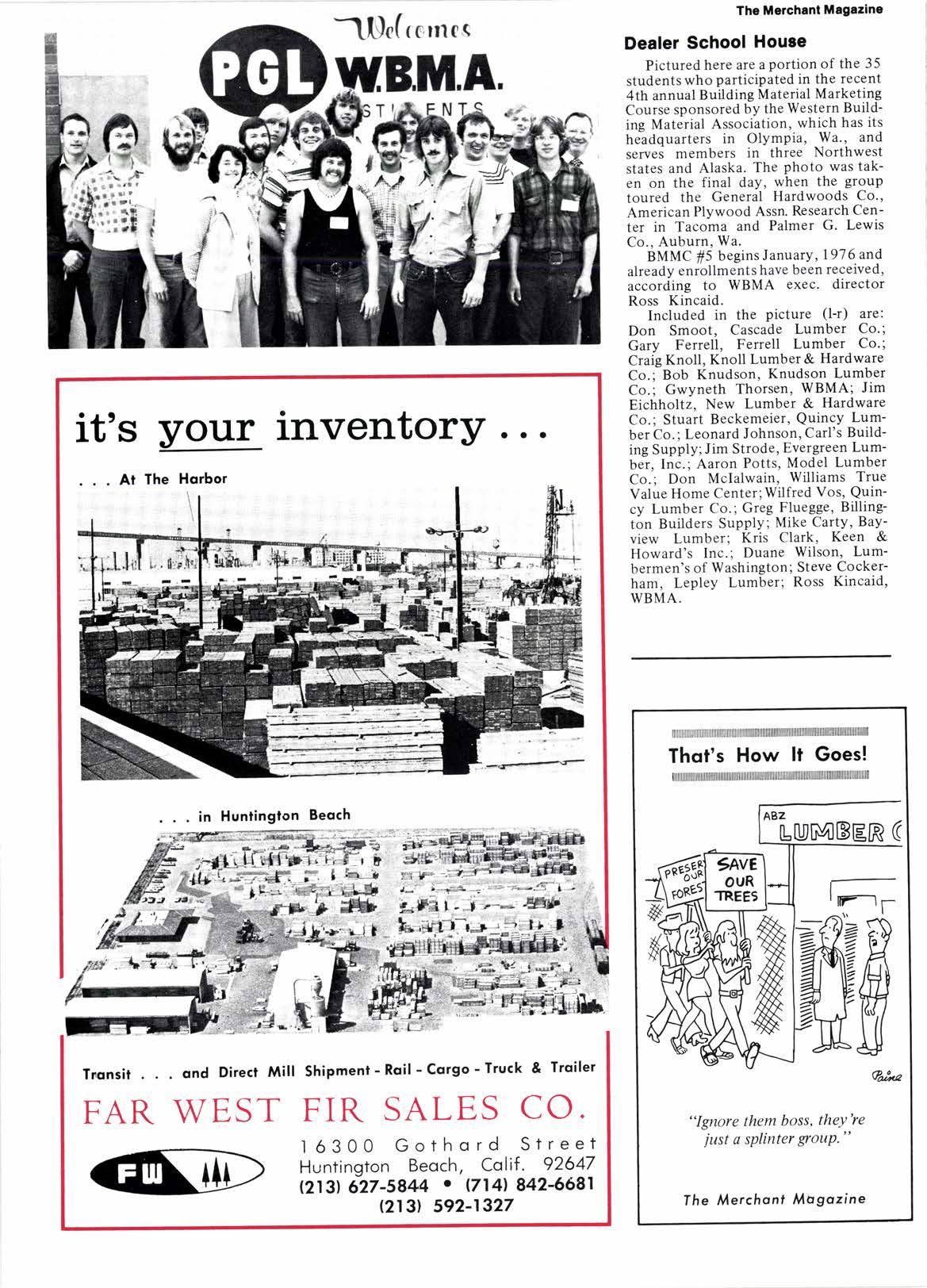
2 minute read
IIUilIEN P[LLEI$!
This tradition of f inest quality and service since 1943 has made Hunter Woodworks one of the nation's leading pallet manufacturers. We are now able to deliver pallets to you anywhere across the nation. Our experienced sales engineers can help you with your pallet, box, skid, and cut lumber problems in any of the 50 states. HUNTER
Facts Can Sell For You
I OOKING through a pamphlet sent recently I'to us that told of the impressive insulating abilities of wood. we were reminded that the nation's energy problems may well demonstrate again that there is no substitute for real wood and its remarkable range of energy-saving qualities.
"Wood-Nature's Best Enerry Saver," a small, four page free pamphlet by the National Forest Products Association, says in part:

"It takes less energr to produce wood than any other structural building material. And wood is the best insulator of all these materials...better than brick, masonry, steel or aluminum. That means less fuel and electricity consumption and lower costs for winter heating and summer cooling.
"The sun provides all the enerry for producing wood, free. From one standpoint, a forest is a factory that converts solar enerry into a major product.
"Less energy during manufacture means less pollution, which means less enerry is needed for pollution abatement and clean-up.
"Also, when wood products become solid waste, those that cannot be recycled are biodegradable. That's another energy saving, compared to products that are more difficult to dispose of.
"As a natural insulator, wood's superiority stems from its unique internal structure. Millions of tiny air cells trapped within its fibers make wood a good protector against heat and cold.
"And that's in its natural state, without the backing of extra insulating material."
The arguments for wood go on, literally, for the books full of good, solid facts. But the message is already clear that wood has energy-related qualities the nation needs to preserve, extend and protect what appears now to be an inadequate supply of energy.
To our readers who deal in the distribution and sales of wood and wood products we urge you to be aware of the tremendous sales message inherent in these facts.
Those who fail to use it to their best advantage are wasting their own energy.

,^IVER the last 100 years, the l:/advances and changes in the production of lumber are quite significant. Even a photograph of a sawmill taken comparatively recently can reveal some startling differences. A comparison of production figures for the last year becomes every bit as interesting, too, as the following will show in informa' tion gathered from Forest Industries in its 1975 Annual Lumber Review & Buyer's Guide.
In the number one spot again this year is the perennial giant. Weyerhaeuser Co. With an output of 2 billion 308 million board feet, the Big W showed only a slight drop from 1973 figures. This production figure is nearly 5O% larger than it was 10 years ago. Timber holdings of this firm are, by far, the largest in the industry and, with improved management and reforestation methods, Weyerhaeuser has managed to show gradual increases in production each year.
Again this year, Louisiana-Pacific Corp. is in the number two spot. Sur' prisingly, L-P's output dropped by slightly more than 300 million feet to


